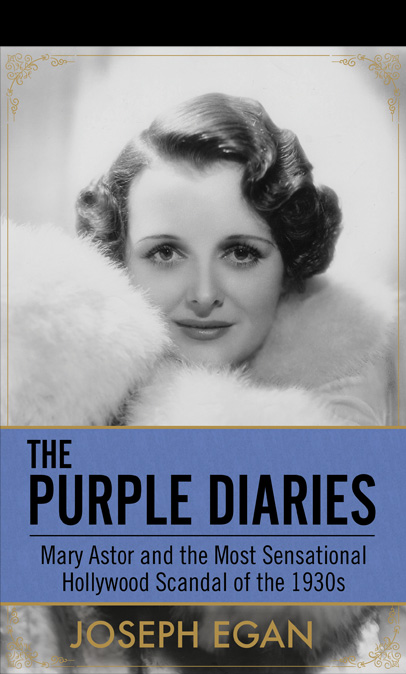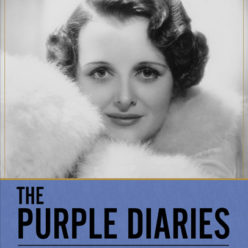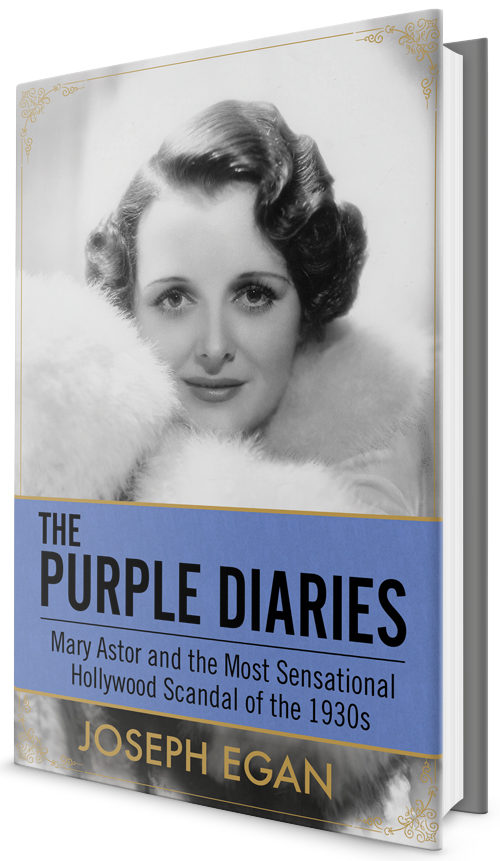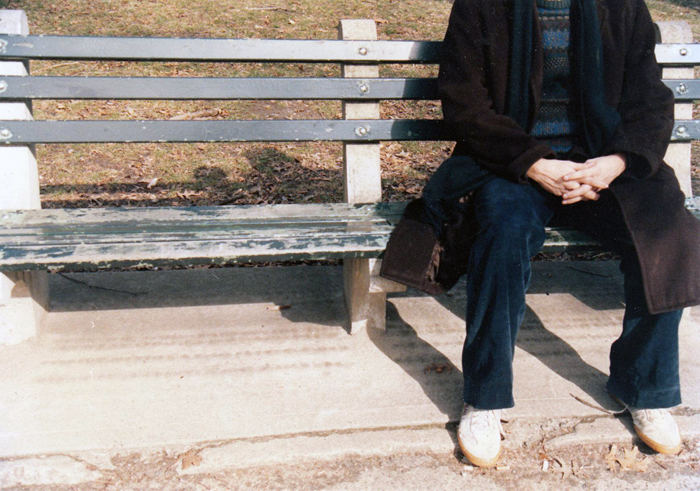


MARY ASTOR’S GOLDEN TEN
Iconic director William Wellman enjoyed telling interviewers that of the 100 or so movies he made during his 30+ years as a director, they were all made for the money. He considered 80 junk, twenty pretty good and ten among the best films to ever come out of Hollywood. The very same could be said of actress Mary Astor. She made 100 plus movies—all made for the money—and, like Wellman she also had her ten, in her case, it was ten great performances.
Mary Astor began in films at age sixteen in 1921 as an ingénue and by no measure could she be called a great actress during the silent phase of her career. Astor was pretty, did what the director told her to do. Nonetheless, her extraordinary looks and affable screen personality made her very popular with the public. Unfortunately, when talkies arrived her voice deemed “too masculine,” she was out of work for almost a year until offered three pictures and her career in sound was off to a good start. Fortunately, during those months of inactivity Astor had learned an invaluable lesson.
“I had been offered staring contracts, more money, fewer pictures, less work, but I was afraid of staring, of being too ‘successful.’ ‘A Joan Crawford picture.’ ‘A Norma Shearer picture.’ ‘A Ronald Colman picture.’ If they were bad, it was their fault; they were box office magic or box office poison. Once you reached their level, you had to stay at the top, for where could you go except down? I really wanted to stick around.”‘
Sticking around meant signing studio contracts as a ‘featured player’ obligating her to do whatever was offered regardless of quality which most of the time wasn’t very good. So Astor set about learning her craft and by the mid-1930s wrote in her famous diary, “I’ve struggled along now for 14 years doing nothing outstanding but learning a lot. It has served its purpose in being a sort of apprenticeship but I think it’ almost over.”

DODSWORTH (1936)
That apprenticeship ended in 1936 when Astor signed a five picture deal with Columbia. Her third film was a loan-out to Samuel Goldwyn for a small but pivotal role in “Dodsworth”—an adaption of Sinclair Lewis Book and the Sidney Howard play. Astor was now in the hands of director William Wyler, a tough taskmaster known for ruthlessly eliciting the best from his actors no matter how many takes it required. Under his careful direction for the first Astor was able to ‘rehearse on camera’ thereby allowing her to dig into her character and convey real emotions.
In the film Sam Dodsworth (Walter Huston) now retired, is touring Europe with his wife, Fran, (Ruth Chatterton). Ruth decides to divorce and Sam takes up with Edith Cortright (Mary Astor). When Fran changes her mind, Sam returns, realizes he really wants to be with Edith and comes back to her.
The effectiveness of the latter part of the film was entirely dependent on Astor performance and she didn’t let either the director or the film down. There are numerous telling moments in her performance in which a great deal is expressed with subtle gestures or expressions. An example is when Astor’s Character again meets Sam and learns about the impending divorce. There is an understated two or three second expression on Astor’s face that tells the audience what the woman is thinking. Cortright always liked Sam but now, there is a possibility for more. So, she asks Sam to her home and invites him to stay longer and the audience is prepared for what will happen between the two. Later, when the film returns to Edith and Sam, the change in both brought on by their relationship is miraculous. Sam has come to life and Edith Cortright’s careful demeanor has been replaced by an emotional openness. Her “drifting”—Cortright’s description of her life before Sam—is over. Thus, when Edith begs Sam to remain, the scene is so moving because Astor conveys the full dimension of the woman’s loss if Sam were to leave her. This scene is as moving as it is because Astor isn’t playing these emotions she is experiencing them.
But, Astor’s finest work in Dodsworth is saved for the film’s final moments. Edith, believing Sam is gone, leans against a wall—her face in close-up. Her expression speaks of pain, loss and the unbearable emptiness of returning to a life of “drifting.” Turning she walks a few steps to the porch looks out at the bay and suddenly sees Sam returning. Desolation transforms to overwhelming and indescribable joy and, on that note, the film ends. In this film Mary Astor is nothing less than superb giving what was, up to that time, the finest performance of her career. It would remain her favorite of all her film roles.

THE GREAT LIE (1941)
Astor completing her Columbia contract Astor free lanced. But, it wasn’t until 1941 that she again had a chance to display the full extent of her talent and Mary Astor would win an Oscar for it. “The Great Lie” is essentially a ‘woman’s picture’ but with something added; Bette Davis vs. Mary Astor. In the film, concert pianist Sondra Kovak (Mary Astor) and George Brent marry when both are drunk, the marriage is declared invalid, Brent marries Bette Davis and dies in a South American plane crash. Davis discovers Sondra is pregnant and agrees to pay her a sizable fortune if Sandra has the child in secret and allows Davis to say it’s hers. So, the two retreat to a remote cabin in the Nevada desert where the baby is born. Meanwhile, Brent is found alive and, although Sandra reveals the baby is hers, he remains with Davis and Sandra gives up any claim to the child.
Davis brought Astor into the project because Astor could play the piano and had proven that she could act the royal “bitch” two years earlier in “Midnight”. The only problem was the script. In Davis words it was “junk” so Davis and Astor rewrote it, beefing up Astor’s part and, by making it showier, intensified the rivalry between the two women. For example, the Nevada scenes were written almost entirely by the two women.
Consequently, Astor infused Sondra with many of her own personality traits and psychological issues. Like Sondra Astor presented herself to the world as a self-assured woman and like Sondra used work to cope with her personal demons. Astor would later write that she didn’t really need to act the part, just play it. In this respect, there is a very telling scene early in the film. Brent rejects Sondra. He leaves and Sondra walks to her Piano. In one quick angry movement, she flings off the piano’s cloth cover, lifts up the piano lid, sits at the keyboard and after yanking off her rings, drops them on the piano and begins to play. It is obvious that Sondra is using her music to cope with deep seated feelings of inadequacy much as (If you know her life story) Mary Astor used acting.
This is amplified in the Nevada sequences when, without her work to cope—
Sondra’s life now controlled by the Davis’ character—Astor brings Sondra’s inner workings to life with deft artistry. Even the casual viewer can now see that Sandra isn’t really strong but, instead, merely determined. In these scenes the chemistry between Astor and Davis is extraordinary. Astor wrote that the two characters, are like “a couple of cats who had to shield their claws for expediency.”
It is in the kitchen scene—Sondra is caught eating pickles—where Sondra is finally revealed for what she is, an emotional child. Initially shouting her protest at being told what to eat, Sondra suddenly breaks down in a flood of tears. From beginning to end Astor brings absolute authenticity to these emotions. Then, following a storm when the two are playing double solitaire, a frightened Sondra suddenly turns hysterical culminating in the famous slapping scene with Bette Davis.
Not only does Astor pump juice into every scene she plays but her on camera fingering of the Tchaikovsky Piano concerto is legendary and, at Davis’s suggestion, Mary Astor even changed her hair style—to ‘the Bombshell bob’—and set woman’s hair styles during most of the early years of the war. After 20 years Mary Astor, great actress had finally arrived.

THE MALTESE FALCON (1941)
Astor’s second film of her three picture deal with Warner Brothers was the “Maltese Falcon.” There’s no need to describe the story as film fans can recite most of the dialogue by heart. Brigid O’Shaughnessy, unlike Sandra Kovok, had absolutely nothing in common with Mary Astor. So to play the part Astor needed to stretch her talent to its limit. Here Astor was fortunate because “Huston proved,” as she wrote in My Story, to be a wonderful director with his keen insight into people.” This keen insight was exactly what Astor needed. Huston would write in, An Open Book, “I rehearsed with Mary Astor before the picture started, and together we worked out her characterization…her voice hesitation, tremulous and pleading, her eyes full of candor.” By now Astor was such a skilled technician that when filming commenced she not only performed the part exactly as rehearsed but added something more. She’d write that “Since her character was a ‘congenital liar,’ and that kind signals that they are lying. There is an unstable quality to them. One of the tip offs is they can’t help breathing rather rapidly. So, I hyper-ventilated before going into most of the senses”
The result is one of the iconic performances of American cinema and one of the finest portraits of a sociopath ever put on screen. Astor delivers famous line after famous line with an acuity that few actresses could have achieved. This one film raised Mary Astor to the pantheon.
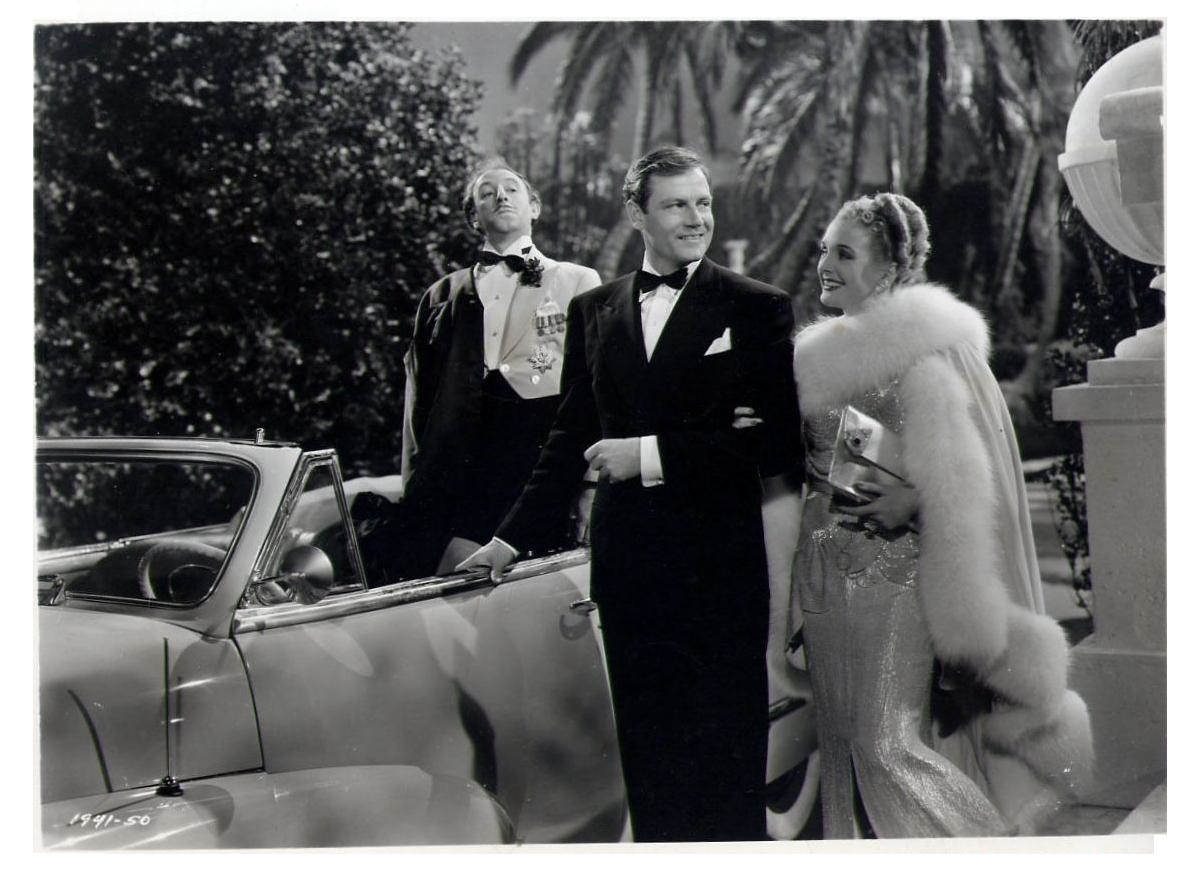
THE PALM BEACH STORY (1942)
Warners contract completed Astor then had the good fortune to work at Paramount with director Preston Sturges on “The Palm Beach Story.” Although, she wrote, “I could never please Preston Sturges. I couldn’t talk in a high fluty voice and run my words together as he thought high society women [should]….or at least mad high society women.” Instead, Astor made the character less a caricature and more an authentic eccentric and in the process dominated her every scene with perfect comic timing. Her rapid fire dialogue, reactions, nimble asides, surprised expressions and laugh line delivery were all letter perfect.
Although third billed, Astor doesn’t appear until the final third of the movie and only in a handful of scenes. Playing a six times married oil heiress with an insatiable libido, she’s on the prowl for Joel McCrea. This over active libido is evident in scene after scene until finally, McCrea turns to her and asks: “Do you ever think of anything but topic A?” Astor’s answer: “Is there anything else.”
Mary Astor delivers the line so delightfully off-the-cuff that it remains the funniest line in the movie and pretty much sums up her character. It is one of the great comic performances of the 1940s. By this point in her career Mary Astor had mastered her craft and could do most anything with a flair that few performers of the period could match.
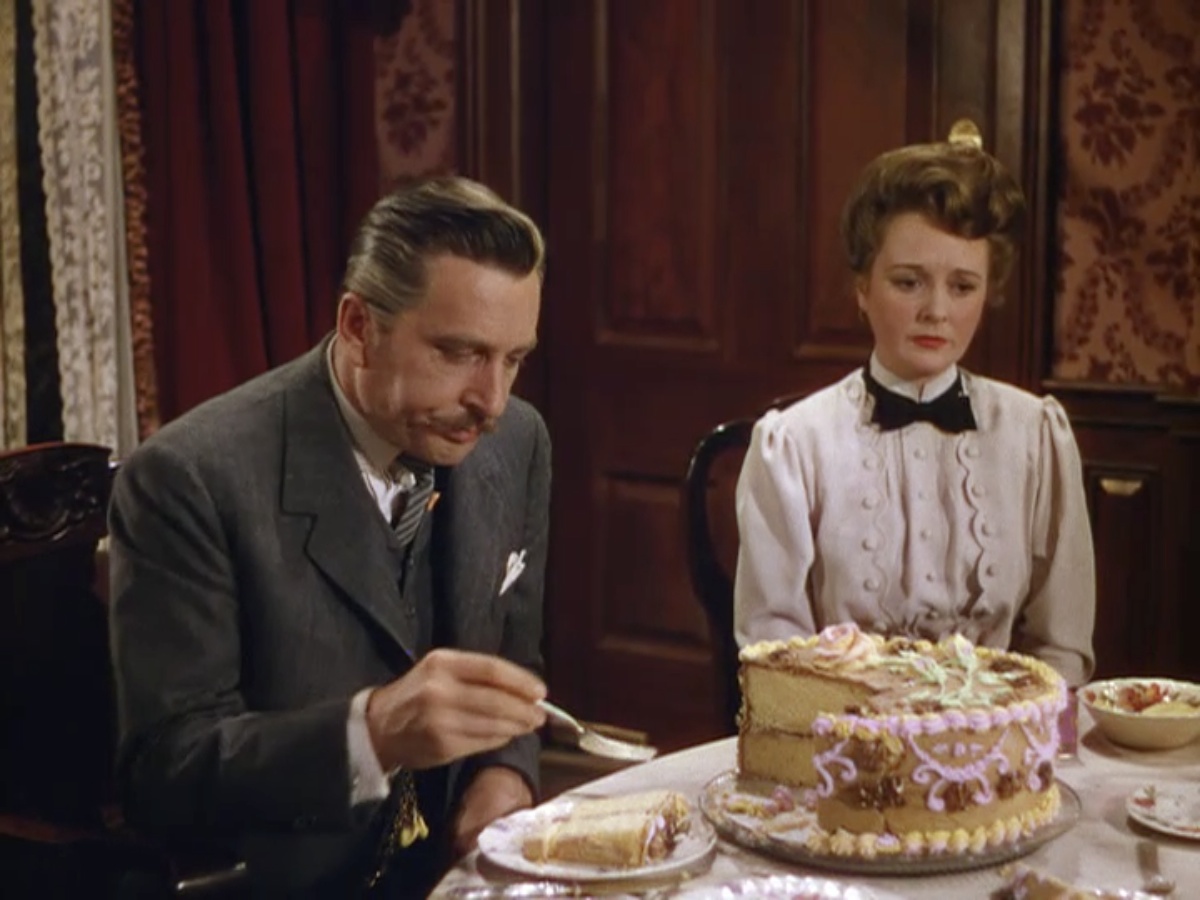
MEET ME IN ST. LOUIS (1944)
After completing her three films at Warners, and still freelancing, Astor made two pictures for MGM, was then offered a seven year contract and accepted. Her first film as a contract player was one of the biggest hits of the 1940s. “Meet Me In St. Louis” was much more than a big budget Judy Garland Technicolor musical. It was the story of a family and at the center of that family was a mother played by Mary Astor in an inspired piece of casting. Astor had never played a character even remotely like this mother. Mary Astor’s grandson calls her performance here effortless. In addition, this was Astor’s second color film and Technicolor acted to help Astor to express and communicate subtle emotions
Much about the film is subtle; shown but never discussed. During the course of the film, Astor is never filmed alone but always with members of her family. Loving, patient and always accepting she is the mother of every child’s dream. With each move and subtle gesture Astor informs the audience exactly what kind of home she has created for her family. The only time she is not doing something is at the dinner table where Astor silently allows her husband to dominate. Even here Astor’s expressions of acceptance, approval and even frustration, inform the audience as to what this dedicated wife and mother is thinking. It is in this way Astor creates a subtle, affecting and extremely layered performance.
Her finest work in the film occurs after the family, upset about having learned that they will be moving to New York, separate and walk to different areas within the house. In response, Astor calmly walks to the piano and plays “You and I.” Her husband moves to the piano and begins to sing. Astor joins in and the entire family slowly gather around this mother and father, once again becoming a united family. The scene is the most moving in the film and its success is owed almost entirely to Mary Astor. Her work here and, in fact, throughout the film is nothing less than impeccable.

DESERT FURY (1947)

CYNTHIA (1947)
Unfortunately the success of “Meet Me In St. Louis”— with few exceptions—relegated Astor to MGM mother roles. In 1947 alone she played three. In the first, “Fiesta” her part wasn’t more than a walk-on in a Mexican variation of the mother in “Meet Me In St Louis.” But it is the other two films, “Cynthia” and “Desert Fury” in which Astor demonstrates her immense range even playing mother.
“Desert Fury” is a Paramount melodrama (Astor was on loan out) in which a 20 year-or-so daughter (Lizabeth Scott) tries to break away from the domination of her tough, business woman mother, Fritzi (Astor). Scott takes up with an unbalanced gangster against her mother’s wishes but, in the end, realizes that her mother’s judgement was correct and her mother finally accepts her daughter as an adult.
In the film Mary Astor is stunning, helped enormously by the film’s Technicolor photography and the striking costumes designed by Edith Head. How well Astor wears these clothes only adds to the effectiveness of a high octane performance. Mary Astor dominates her every scene, even playing opposite a young Burt Lancaster. Frankly, her performance is about the only thing memorable in the film.
Facebook friend Karin Mustvedt-Pluss added, Mary Astor’s character is fascinating in and the relationship with the daughter even more so. It comes alive, grows and evolves much more than characters usually do in these kinds of movies. At times Fritzi can be so hard it’s painful to watch, but every now and then the hurt and bruised girl and mother on the inside shows. Excellent acting. Mary Astor even manages to pull Lizabeth Scott along, which is the first time I’ve ever seen that happen with Scott.
In “Cynthia” Astor plays a mother the complete opposite of Fritzi. This is a woman who continually subordinates herself to a weak husband. About the only thing that the two women have in common is their love for their daughters, in this case, Elizabeth Taylor. Observing what Astor does with a potentially nothing part is to understand how talented an actress Mary Astor had become. With few words and, mostly, her face Astor creates a character so genuine that in every shot you can see and even feel the immense love this mother has for her daughter. This is very unlike Fritzi who, unable to show these emotions, expresses her love by continually attempting to dominate her daughter.
The two characters are different sides of what is essentially the same coin. Both women love their daughters with intense ferocity but both express this love in radically opposing ways. Seen back-to-back the two films give clear indication of Astor’s versatility and range as an actress. In my opinion, Mary Astor was at the peak of her talent and one only wishes that she had been given more opportunities to display it. In my opinion, Astor was at the peak of her talent and one only wishes that she had been given more opportunities to display it.
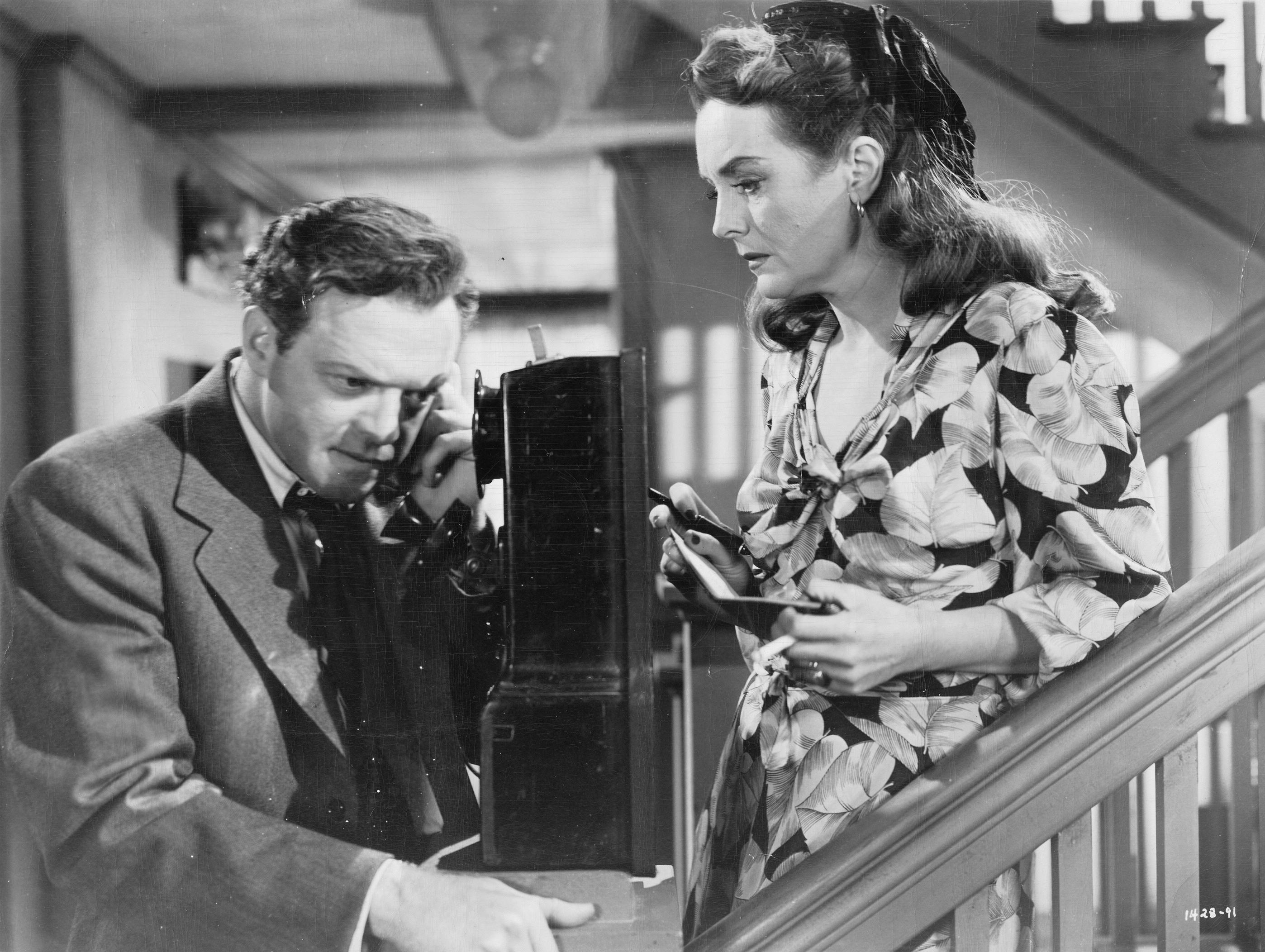
ACT OF VIOLENCE
The following year while playing Marmee in a big budget production of “Little Women, Astor took two weeks off to play a small part in director Fred Zinnemann’s B-movie thriller, “Act Of Violence”
Van Heflin, having wronged Robert Ryan during the war, learns that Ryan wants to kill him. Fleeing, Heflin meets a prostitute (Mary Astor) who, learning about Heflin’s troubles and willingness to pay his way out of it, takes him to some nefarious types. One of them plans to lean on Ryan and, if need be, kill him. Heflin is repulsed and Astor has reservations. Nevertheless, she and the thug bring a distraught Heflin back to her apartment where Heflin inadvertently revels Ryan’s whereabouts. Waking up the next day, Heflin learns what happened but before he leaves to stop it, Astor—preparing to leave town—asks him to write her a $100 check for her troubles.
Astor is so different here that the first time viewing the movie it was a full five minutes before I realized that the prostitute was Mary Astor. Appearing midway in the picture, she plays a none-too-bright over-the-hill hooker; a character Astor created single handedly. She chose the character’s one dress off a cheap department store rack, frayed the hem and even put cigarette burns in it. She decided on the frumpy hair style and chose unflattering make-up which made her look terrible in the film’s harsh noir lighting. Astor even came up with the character’s ‘bits of business’ from biting her nails to the comic hat she wears in her last scene.
The result is a complex performance. On one hand the character actually feels empathy for Heflin. Nevertheless, seeing an opportunity for monetary gain, involves Heflin in a potential murder plot convincing herself that she is helping the man. Finally, when things get out of hand, preparing to skip town because she “don’t want to have anything to do with this” she calmly demands a $100 check for her troubles revealing the mixed purposes of a desperate woman barely surviving on society’s lowest rung. This certainly was no MGM mother. Watching this one performance makes one understand the costs to Mary Astor the Actress of signing that MGM contract and being relegated in film after film to playing mothers.

ANY NUMBER CAN PLAY (1949)
A year later Astor appeared in “Any Number Can Play” with Clark Gable.” This was 17 years after the two had made Red Dust. With Gable nearing 50 and Astor 43 they looked great together. (I always thank heaven that Astor wasn’t cast as Gable’s wife as she would have been playing yet another mother. Instead Alexis Smith, age 28, played the part and with an 18 year old son, this made Ms. Smith age 10 when she gave birth. Of note is the fact that Astor had a daughter the same age as the Actor playing Gable’s son.)
In the film Gable owns a gambling establishment and, plagued by family problems, also has a weakening heart. Astor plays two scenes in the film playing a wealthy but hardened woman of the world. In the first, standing at a slot machine she brushes off Wendell Cory with a comment the equal to anything Sondra Kovok might say and immediately establishes her character in a few seconds. Not long after she is alone with Gable in his office and it is apparent that the woman is in love with the man and has been for years but it is not reciprocated.
As the scene opens Gable has an attack of angina but pretends it was only an act. He then walks over to Astor and gives her a friendship peck. She makes a play for him and he politely declines. Then in a moment of exasperation he asks her if she would go way with him and—thinking there’s a possibility of something—all her hardness drains away and she asks if the offer was “for real”. When Gable answers no she then asks him to run off with her, telling him she’s been waiting for this kind of offer for a long time. Moments later she asks him flat out to let her love him; inviting an affair. He glances over at a picture of his wife and son and she realizes this isn’t going anywhere.
The talk shifts to his problems with his son. Astor listens and then demonstrates an understanding of the man that leaves him speechless and she quietly heads for the door. She looks back and her silent look says everything. Knowledge of his sickness and the realization that her deep love will never be returned.
The effectiveness of the scene and emotions of her character are all accomplished by Astor through the absolute sincerity of her performance. It is the most poignant scene in the film and this is due entirely to Astor’s impeccable acting. With looks, glances and even the modulation of her voice, Astor gives the full dimension of a character in just a few minutes of screen time. It’s a masterly performance.

HUSH HUSH SWEET CHARLOTTE (1964)
“Any Number Can Play” was Astor’s last released film under her MGM contract and she didn’t work for three years. Turning to the stage and television, her film work was relegated to brief cameos in forgettable movies. There was one exception.
“Hush Hush Sweet Charlotte” was a follow-up to Bette Davis’ “Whatever Happened to Baby Jane.” Astor is in just two scenes; the first lasts less than a minute and the second under four. For the second scene, although Bette Davis wasn’t in it, she showed up to watch Astor work and told the director to “turn Astor loose;” meaning, allow Astor free reign to strengthen the scene.
Made up to look 25 years older and despite the entire scene played with Astor seated, the actress employs multiple bits of business to enhance her characterization of a woman facing death. Giving a hint of a shortness of breath, she speaks with a slow easy southern accent, using her fan to give a sense of the excessive heat and the woman’s acceptance of it as an unavoidable factor of life. When she muses about her mortality, “This long disease my life;” the line is delivered so adroitly it provides insight into the dying character’s fatalistic view of existence. Astor then gently touches the lace ruffle on her sleeve announcing “Ruined Finery” and, as if a burden has been lifted, admits her poverty.
This four minute scene, unquestionably the only genuine moments in an otherwise overwrought gothic melodrama provides—more Tennessee Williams than gothic horror—a fitting farewell to Mary Astor’s 45 year film year career; a career that transformed a lovely but, unskilled ingénue, into an actress of the first rank.
Unless specifically referred to, all quotes are from Mary Astor’s 1971 book, “A life on Film.”
